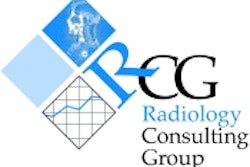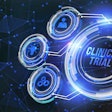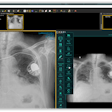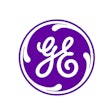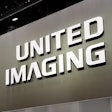Siemens and Philips grabbed headlines at last year's RSNA show for their acquisitions of Acuson and Agilent Technologies Healthcare Solutions Group, respectively. This year's big ultrasound news concerns efforts by the German and Dutch heavyweights to consolidate their newly acquired product lines.
It’s too early to tell if these mergers will translate into market dominance by either company -- especially since other players are also striving for ultrasound's top spot. A slew of new product introductions promises to keep the market lively for at least the near term.
On the new product front, manufacturers are paying more attention than ever to incorporating ergonomic principles into system design. Meanwhile, the market for portable systems is showing signs of maturing, as evidenced by the rise of specialized clinical applications such as cardiology, general radiology, breast, and small-parts imaging.
Technological innovation hasn't been confined to portable systems, however. Three-dimensional rendering and 2-D image resolution have also taken great strides forward during the year.
Analogic/B-K Medical
Analogic of Peabody, MA, will debut a PC-based digital ultrasound subsystem, the AN2300 digital ultrasound engine, at this year’s RSNA conference. The product will deliver core ultrasound technology to which an OEM partner will be able to add its clinical expertise.
AN2300 incorporates both the hardware and software necessary to acquire, process, and convert ultrasound echo information into a high-resolution video display. The product includes a fully digital beamformer, a linear waveform transmit system, high-frequency imaging, color and Doppler processing, second harmonic imaging capability, synthetic aperture, multibeam parallel processing, and high-resolution SVGA video output.
For OEM developers, the engine can be used to create a turnkey system by adding an application-specific user interface, clinical application software, transducers, ergonomic packaging, and a display. To tie it all together, Analogic provides an open application programming interface (API) that permits OEM developers to program the system utilizing the Microsoft Windows NT operating system. The company is also making available an image quality and diagnostic toolbox.
B-K Medical, an Analogic subsidiary, will be offering Analogic booth visitors a sneak preview of Surgical Hawk 2102 XDI, a mobile ultrasound system with built-in docking capabilities.
The product features multiple operating room (OR) connection capabilities for linking OR surgical towers with a mobile ultrasound system. The docking system connects via a snap-on connector mounted on any OR’s surgical tower.
This connection system generates a built-in picture-in-picture window on the surgical monitor that allows physicians to simultaneously view surgical and ultrasound pictures on the same screen. Once the ultrasound portion of a surgical procedure is completed, the system can be disengaged so the scanner can be used in another OR or examining room.
Surgical Hawk 2102 XDI is available with optional enhancements such as a palm control unit for remote scanner operations, and an integrated 3-D imaging package. The product also provides uniform resolution throughout an entire image, and permits scanning frequencies of up to 20 MHz.
Biosound Esaote
Biosound Esaote will showcase two of its cardiology-targeted ultrasound systems, Caris Plus and Megas ES, in McCormick Place this year. Megas ES provides image and application enhancement upgrades to the company’s Megas platform to match the modality’s diagnostic technology curve. Caris Plus weighs in at less than 35 pounds, and is slated for the compact market.
Megas ES features both DICOM connectivity and storage capabilities in a 48-lb unit. The system is also bundled with software capable of supporting all contrast agents currently in development. The Indianapolis-based company accomplished this by improving its signal processing technology and adding quantification algorithms that are better able to assess change over time.
The unit has 192 true channels, tissue enhancement imaging harmonics with two frequency ranges, a stress-echo option, and a line of phased, linear, and curved-array probes. The product is positioned for cardiology offices, mobile services, imaging labs, and regional and rural hospitals interested in high-end cardiology and vascular imaging.
Caris Plus is directed toward private-practice cardiology and vascular offices that are seeking a compact unit. It features a built-in carrying handle and sensitive color and spectral Doppler ultrasound, color and power-flow mapping, a stress-echo option, and accepts transducer frequencies up to 10 MHz. Its software package includes tissue enhancement imaging, and a complete calculation package.
Medison America
The U.S. division of Seoul, Korea-based Medison will be introducing a 128-channel gray-scale ultrasound system and a multispeciality ultrasound system at this year's RSNA show, where both products will make their North American debuts.
The as-yet-unnamed gray-scale system boasts 128-channel digital beamforming and freehand-style 3-D ultrasound. The system's beamforming architecture eliminates artifacts via pixel-based focusing and proprietary image processing technology, according to Medison.
The vendor’s 3-D imaging technology enables users to create surface-rendered images that rotate freely via a process that calculates scanned 2-D data. The system also features optimized harmonic imaging technology to enhance spatial resolution and contrast in the mid-field region, Medison said.
An available cine function enables images to be stored in system memory at a rate of up to 64 frames per second at normal resolution. The system can save up to 256 frames in disk memory for later examination and cine playback at variable speeds. The company will ship the product in December of this year.
Medison will also be premiering SonoAce 8000 at the conference. The multispeciality system features harmonic imaging, pulsed inversion harmonics, multibeam processing, color Doppler, and 3-D capabilities.
SonoAce 8000 is available in two flavors, a "Live" and an "EX" version. SonoAce 8000 Live is targeted at the ob/gyn market, with enhanced 3-D functionality for abdominal and vaginal imaging. SonoAce 8000 EX incorporates all the functionality of its partner system, such as pulsed-wave Doppler and static and steered continuous-wave Doppler, but does not share its 3-D capabilities.
Both SonoAce 8000 versions support three active probe ports and run on the Microsoft Windows 2000 operating system. The product will be available for shipping this December.
Philips Ultrasound
Over the past year, Philips Ultrasound (formerly ATL and Agilent Healthcare Solutions Group) has focused on integrating its product offerings under the Philips umbrella. The result has been a synergy between Philips Research and the Bothell, WA-based division that has produced the XRES diagnostic ultrasound image processing technology. The technique will be demonstrated at the RSNA show.
In developing XRES, Philips researchers conducted extensive studies on the ability of the human eye to distinguish patterns in the different imaging modalities. Using some of the findings of this research, the company then created and applied an algorithm to ultrasound exams to improve clinicians’ ability to define tissue boundaries and extensions, and to assess identifying characteristics.
XRES imaging analyzes individual pixel groups in real time to detect prevailing relationships and apply order, making it easier for the human eye to perceive tissue patterns needed to make a diagnosis. The resulting ultrasound images are then refined evenly throughout the entire field-of-view, according to the company.
The technology is available on the firm’s HDI 5000 SonoCT scanner, and is also offered as an option on many HDI broadband scanheads, covering abdominal, ob/gyn, breast, small parts, vascular, and musculoskeletal applications. ATL's HDI 3000, 3500, and 5000 ultrasound systems can also be upgraded to include XRES technology for approximately $15,000.
Next page:
Siemens through Toshiba





